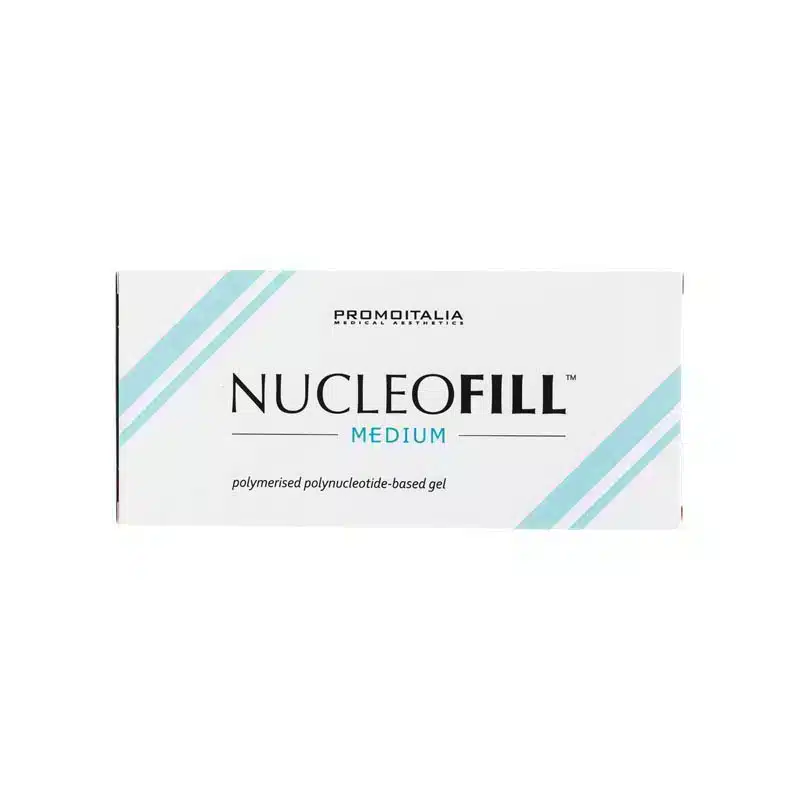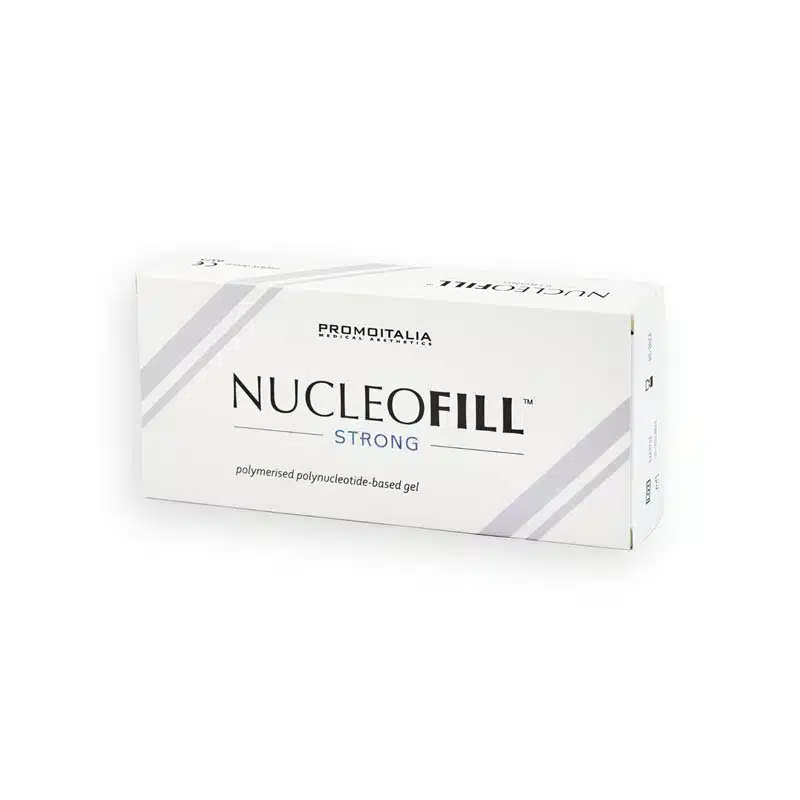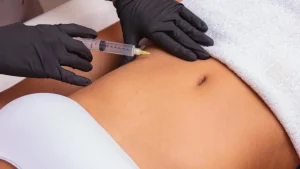Leclerc et al. (2021) project that the global market for aesthetic injectables could expand by 12 to 14 percent annually over the next five years provided manufacturers and providers leverage current trends. This projection underscores the increasing popularity and demand for minimally invasive treatments in aesthetic medicine.
Non-surgical aesthetic treatments provide powerful and effective solutions for those seeking skin rejuvenation. Many individuals compare polynucleotide and hyaluronic acid injectables. Specifically, Nucleofill and Profhilo are recognized for their safety and efficiency in rejuvenating the skin.
In this article, we’ll explore the differences between Nucleofill vs Profhilo, looking at their composition, how they work, what results you can expect, and other key factors to help you make an informed choice.
Key Takeaways
- Nucleofill is categorized under biostimulators, while Profhilo is a skin booster with a lifting effect.
- Despite their active ingredient differences, both injectables can stimulate collagen and elastin production.
- Nucleofill’s longevity of effects ranges between six to twelve months, while Profhilo’s duration may offer six to nine months of effects.
- Providers may offer maintenance sessions for both injectables every six months to sustain the impressive results.
About: Medica Depot is your trusted all-in-one supplier, offering a range of high-quality medical injectables and supplies. Buy Nucleofill online at Medica Depot today! Whether for health professionals, plastic surgeons, dermatologists, licensed estheticians, or other specialists, we can offer genuine, brand-name products you may need. With Medica Depot, we prioritize serving you better to improve the patient’s quality of life.
Understanding Nucleofill and Profhilo
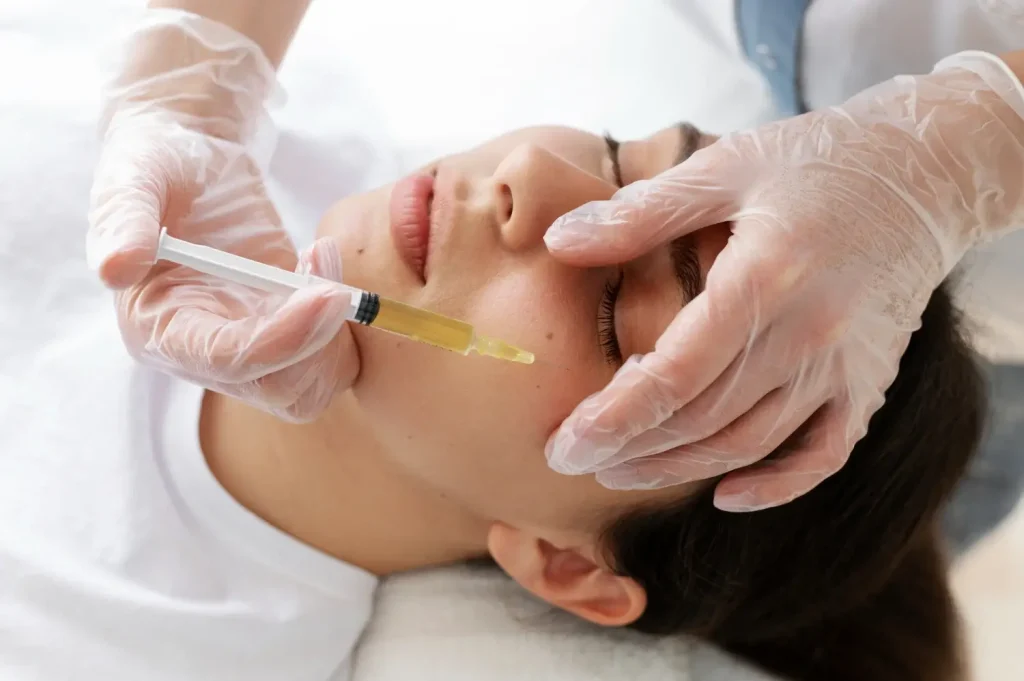
Minimally invasive injectable treatments continuously emerge as individuals’ top choices for their aesthetic enhancements. Comparing different injectables, like Nucleofill vs Profhilo, may be challenging without the expertise and knowledge of aesthetic professionals.
Understanding their differences can result in finding the most suitable treatment for each patient. It’s worth noting that both injectables do not offer simple volumization like traditional dermal fillers. Nucleofill is categorized under biostimulators, while Profhilo is a skin booster with a lifting effect.
- Nucleofill Composition: This biostimulator capitalizes on polynucleotide (PN) derived from natural origin. Its PN concentration differs from its collection of injectables, such as Nucleofill Eyes, Medium, Strong, and Hair.
- Profhilo Composition: This skin booster utilizes a unique formulation of hyaluronic acid made with NAHYCO technology. This results in the development and use of one of the highest hyaluronic acid concentrations in the market.
While they may differ in their active ingredients and formulation, Nucleofill and Profhilo have proven to effectively target various facial and body areas for aesthetic improvements. When used with a patient-centric approach, they can deliver optimized skin rejuvenation.
Mechanisms of Action
Nucleofill works by activating fibroblasts, which stimulates the production of collagen and elastin. It also promotes tissue repair, delivers antioxidants to the skin, and offers deep hydration, which makes the skin look and feel healthier.
Meanwhile, Profhilo’s high concentration of hyaluronic acid deeply hydrates the skin and stimulates the production of collagen and elastin. This helps tighten loose skin and improve its firmness and elasticity, giving it a smooth and youthful appearance.
Clinical Outcomes and Expected Results
Thanks to its collection of injectables, Nucleofill boasts its versatility in addressing facial and body areas. The Nucleofill injectables can target complete face rejuvenation, eyes and under eye, neck, chest, and hair.
In contrast, Profhilo also offers facial and body injectables to address signs of aging in these regions. The typical treatment areas for Profhilo include the face, neck, inner arms, and abdomen.
Duration of Effects, Session Frequency, and Expected Results
Interested individuals weighing their options between Nucleofill vs Profhilo should consider their longevity of effects, number of sessions, and potential results. These can be significant factors in deciding which treatment to receive for their skin rejuvenation journey.
- Nucleofill’s Duration of Effects: Six to Twelve Months
- Profhilo’s Duration of Effects: Six to Nine Months
Furthermore, adhering to the physician’s recommendation of treatment protocol can ensure optimal treatment outcomes. Completing the required treatment cycle can offer longer results to patients.
- Nucleofill Sessions: The typical Nucleofill treatment involves two to four sessions spaced two to four weeks apart.
- Profhilo Sessions: This treatment generally requires two initial treatments, administered four weeks apart.
Providers may offer maintenance sessions for both injectables every six months to sustain the impressive results. These patients’ before-and-after photos highlight Nucleofill and Profhilo’s expected outcomes post-treatment in the facial region.
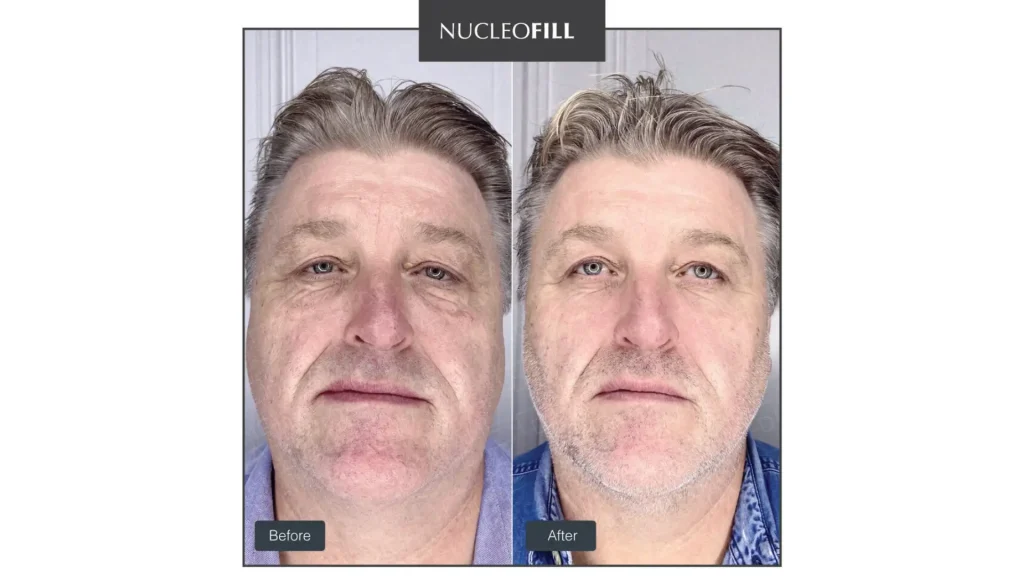
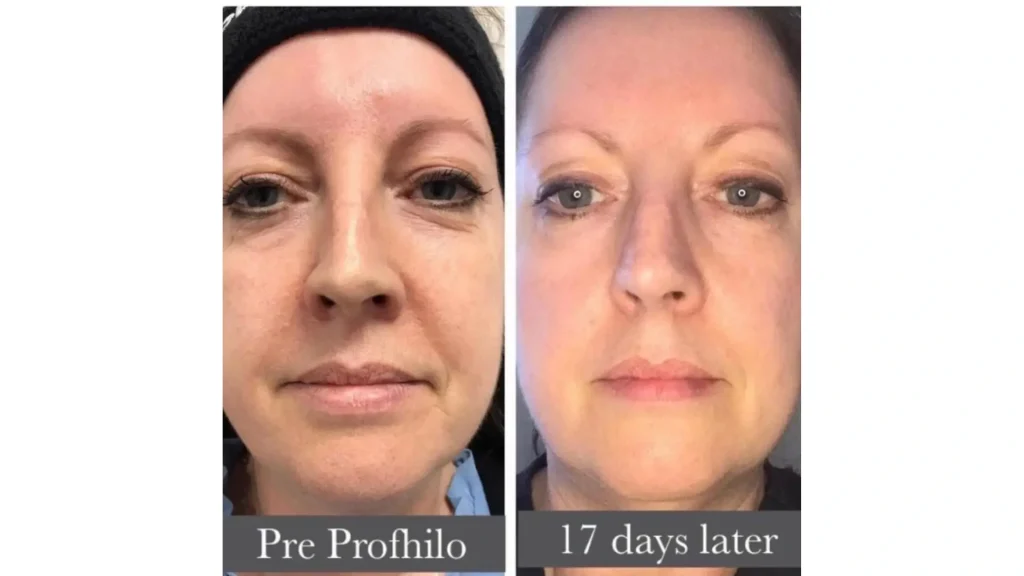
Choosing Between Nucleofill and Profhilo
When selecting between Nucleofill vs Profhilo, providers and patients should consider various factors. This emphasizes the importance of a patient-centric approach and tailored treatment plans to ensure patient safety and optimal outcomes.
- Individual Patient Characteristics: Medical history, current medications, metabolism, etc.
- Skin Type and Condition: Specific aesthetic concerns, other skin problems, varied skin types, etc.
- Aesthetic Goals: Providers must understand the patient’s desired outcomes and set realistic expectations to increase their satisfaction post-treatment.
Potential Side Effects and Contraindications
Meanwhile, equipping patients with comprehensive information about the injectables’ potential side effects and contraindications can empower them in decision-making throughout the process.
- Common Nucleofill Side Effects: Mild swelling, redness, bruising, and tenderness.
- Common Profhilo Side Effects: Temporary swelling, redness, and tenderness.
These typically resolve within a few days to a week. However, patients must seek medical attention if these persist or unexpected symptoms occur. They should also understand that specific contraindications suggest avoidance of Nucleofill and Profhilo.
- Do not administer Nucleofill or Profhilo to patients with hypersensitivity to any of their components.
- Avoid administration to treatment areas with active skin infection or disease.
- Do not administer to pregnant and lactating women and pediatric patients to avoid potential complications.
Additionally, Nucleofill suits those with aging skin who require a collagen boost and improvement in elasticity. Providers may prefer Profhilo for individuals seeking overall skin hydration and firmness.
Conclusion
Comparing Nucleofill and Profhilo helps identify the best treatment for each patient. Understanding their composition, mechanisms, and expected results allows for more tailored treatment plans. Both injectables offer safe and effective skin rejuvenation options—Nucleofill as a biostimulator and Profhilo as a skin booster.
A personalized approach guided by skilled aesthetic professionals ensures patients receive the most suitable treatment for their individual goals as minimally invasive procedures gain popularity.
FAQs
1. What are the key differences between Nucleofill and Profhilo?
Nucleofill is a biostimulator that utilizes polynucleotide, while Profhilo works as a skin booster with a lifting effect using hyaluronic acid.
2. How long do the effects of Nucleofill and Profhilo last?
Nucleofill’s effects typically last between six to twelve months, while Profhilo’s effects may last six to nine months.
3. How many treatment sessions are usually required for Nucleofill and Profhilo?
Nucleofill typically requires two to four sessions, spaced two to four weeks apart, while Profhilo generally requires two initial treatments, administered four weeks apart.
References
- Leclerc, O., Peters, N., Scaglione, A., & Waring, J. (2021, December 20). From extreme to mainstream: The future of aesthetics injectables | McKinsey. Www.mckinsey.com. https://www.mckinsey.com/industries/life-sciences/our-insights/from-extreme-to-mainstream-the-future-of-aesthetics-injectables
- Profhilo injection treatment. (n.d.). Profhilo. Retrieved October 16, 2024, from https://www.profhilo.co.uk/

